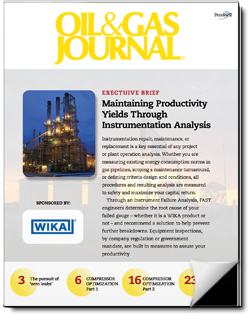|
Linde to discuss hydraulic fracturing economics at SPE
A paper to be presented at the upcoming Society of Petroleum
Engineers' Annual Technical Conference and Exhibition will provide details
on life cycle costs of fluids used for hydraulic fracturing.A paper to be
presented at the upcoming Society of Petroleum Engineers' Annual Technical
Conference and Exhibition (ATCE) will provide details on life cycle costs
of fluids used for hydraulic fracturing. The conference will be held on
September 30 – October 2 at the Ernest N. Morial Convention Center, New
Orleans, Louisiana.
The SPE-166113-MS paper, "A Day in the Life of
a Barrel of Water: Evaluating Total Life Cycle Cost of Hydraulic
Fracturing Fluids," will be presented by Robin Watts, Oil & Gas Technology
manager of Linde LLC, in the Tuesday, October 1, session on Fluid and
Environmental Considerations. In her paper, Watts examines the total life
cycle costs of hydraulic fracturing fluids, comparing water-based and
energized solutions. She also evaluates when fracturing fluids energized
with carbon dioxide (CO2) or nitrogen (N2) can be used to reduce water
volume for more economical hydraulic fracturing. It also evaluates how the
selected fracturing fluid can affect productivity.
"In certain
situations, the increased productivity achieved with energized solutions
can more than offset lower per-barrel water costs, driving a lower overall
unit cost of production," Watts says in her paper. Watts will also
demonstrate how simple economic assessment tools developed by Linde can
help producers estimate the potential economic impact of using different
fracturing fluids by including estimates for a variety of cost and
productivity factors over the entire life cycle of the well:
-Simple Calculator Tool -- for comparing estimated total cost of options,
including acquisition, management and disposal calculations
-Productivity Simulator Tool -- for comparing estimated productivity
factor of hydraulic fracturing fluid options, fully accounting for the
phase behavior and compositional changes of an energized fluid
Hydraulic fracturing requires 2.5 to 5 million gallons of water per well,
and water acquisition, management and disposal represent major costs for
producers. Linde's energized solutions, using CO2 or N2, allow producers
to reduce the total volume of fluid needed for hydraulic fracturing by up
to half, reducing costs while improving productivity, safety and
environmental impact. "Linde's life cycle calculator tool and the
simulation tool examining the productivity implications of different fluid
options can help producers make better decisions on how to best manage
their water needs," Watts said.
More information on how energized
solutions can reduce water use and improve productivity and Linde's
Calculator and Productivity Simulator tools can be found in a white paper
version of "A Day in the Life of a Barrel of Water" on Linde's oil and gas
services website - http://lindeoilandgas.com/
Source Linde Group -
Linde North America
Published in Oil & Gas Journal and PennEnergy
September 25, 2013
|

Worldwide more than 100,000
paid subscriptions
 
Technical
Briefs
from the editors of
Oil & Gas Journal
and Offshore Magazine:
Click
here ... and see what we have designed, produced, published and promoted for WIKA
and FMC Technologies ... and what we would like to do for you.
.
PennEnergy
Weekly
Video News
.PennWell Petroleum Group:
OGJ - Oil & Gas Journal
OGJ_eNewsletter
Offshore Magazine
Offshore eNewsletter
Oil & Gas Financial Journal
Oil, Gas & Petrochem
OGJ Russia
OGJ LatinoAmericana
PennEnergy
PennEnergy-eNewsletter
+ + +
For more information, media
kits or
sample copies please contact
wilhelms@pennwell.com
www.sicking.de
|




